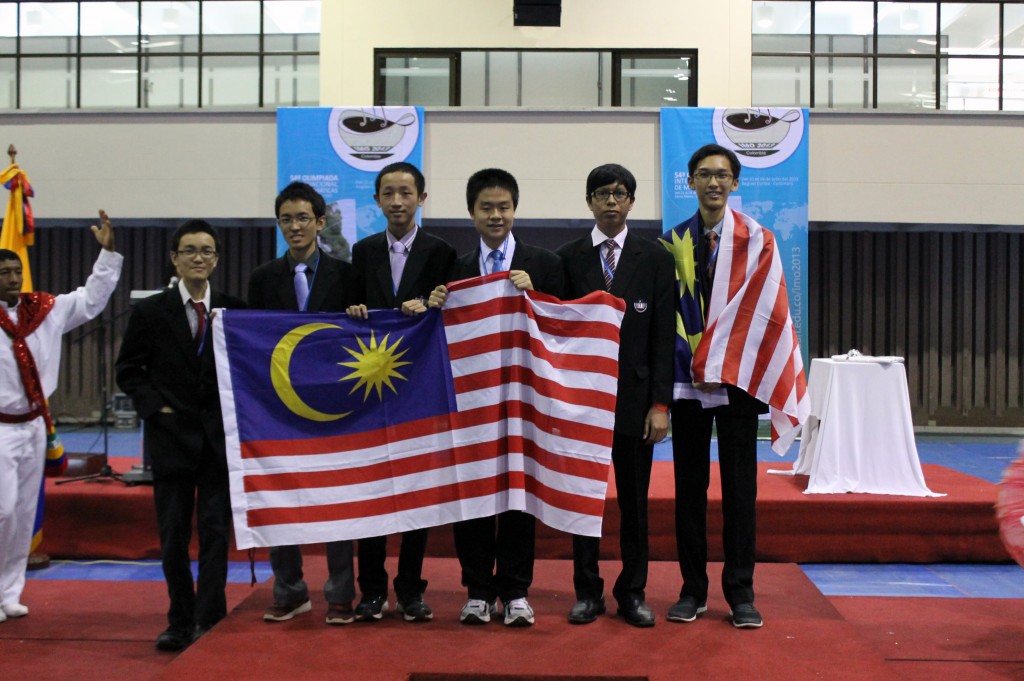SANTA Marta is a city tucked away in southern Colombia, a major tourist destination on the Colombian Carribean. There’s nothing not touristy about the place: the scorching sun pulls the people out of their homes and onto the beautiful beaches from beautiful daybreaks to majestic sunsets.
If not tourism, why else would 500 students from around the world congregate here? As always, mathematics provides the answer. On July 18 to 28, Santa Marta welcomed high school students from 97 countries to participate in the 54th International Mathematical Olympiad. Each country sends six representatives to do battle for two days – not among themselves, but with six math problems to be solved over nine hours.
It’s the world’s largest party of teenage mathematicians across the globe, a festival of young people who think, breathe, and dream mathematics.
Malaysia has participated in the International Mathematical Olympiad since 1995, and results have been improving quickly. Before 2008, we averaged ranks of 60 to 70. This year, we reached our highest-ever rank of 31 with a cumulative score of 117, tied with Hong Kong. Seventeen of our 22 medals have come in the past 6 years, and the team brought back the nation’s first gold in 2011.
There are a few clear reasons for these achievements. In 2007, past Olympians Suhaimi Ramly and Ikhwan Azlan returned to coach the national team.
And effective 2010, ExxonMobil began sponsoring the national team’s intensive training program which includes training materials and workshops, as well as participation in several international pre-IMO competitions. The preparatory programs help boost the team’s confidence and readiness for the actual competition.
The road to IMO
The road to the Malaysian team is long and winding. From the National Mathematical Olympiad held annually by the Malaysian Mathematical Sciences Society, students are whittled down via four training camps and selection tests.
Roughly 10000 students are filtered down into 200, then 60, then 24, then 12, before a final test that determines the final team of six people. It’s a gruelling process, especially for the ones that make the final twelve, only to fail at the final hurdle.
This year, the team was made up of Khong Yi Kye (who finally made the team after reaching the top 12 for the past three years), Shazryl Shafyz Zulrushdi, Anzo Teh, Twin brothers How Si Yu and How Si Wei (who won Malaysia’s first IMO gold), and myself.
The chosen six then go through extensive training. IMO training is no joke. Team members go through 20 mock IMO tests to simulate the actual exam, each paper with three problems lasting four-and-a-half hours each.
And so it begins
“You may begin now.” A voice echoes around the hall, followed immediately by the shuffling of the contestants as they begin their assault on Day One.
I felt my breathing start to ease when I saw that the last problem was on geometry. Geometry was my strong suit. If I managed to solve the first two problems quickly enough, I may even get a perfect score today.
Four and a half hours later, I walked out of the contest hall feeling slightly ruffled. I hadn’t found a solution for the geometry problem. On the flipside, I had solved the other two problems, which meant that it was still a decent performance overall.
But later on, I realised that I had misread a problem. I held my head in my hands, speechless for a minute. I had just virtually thrown away a shot at a silver or gold medal.
I recovered quickly, and felt good on the morning of Day 2. I read the questions twice this time around. The first question was a geometry question, which was good.
Fast forward to the end of the exam and I was on the verge of pulling my hair out. I couldn’t solve the second problem. I walked out of the exam hall feeling downcast. But nevertheless, the contest was now over, and it was time to have fun!
IMO starts now
Although the International Mathematical Olympiad is, as the name implies, a mathematical competition, no one actually works on math after the competition. Why would we? There was just too many interesting people to talk to, too many people to shake hands with.
A particular treat came one afternoon when we heard that Harald Helfgott was giving a lecture. “Are you serious?” I kept asking our guide. Harald Helfgott is a mathematician who recently made headlines by proving the Weak Goldbach Conjecture, a notoriously difficult problem in number theory.
Before we knew it, two days had passed, and the results were released. We dropped everything and scrambled to check on our final rankings. We finished at rank 31, winning two silver medals and three bronze medals. Words of congratulations were heard all around the room as we celebrated each others’ victories.
As the medal went around my neck, I forgot all about all the struggles of the past few days. I turned around and smiled as the applause erupted from 500 other young mathematicians, in a beautiful show of mutual respect and friendship.
And that was it. The IMO was over. I am now back home in Malaysia, and my heart still skips a little whenever one of my new friends send me a friend request on Facebook.
* Got a story you want to share with us? Send it to alltherage@thestar.com.my! You can also message us on Facebook at facebook.com/thestarRAGE.


Tell us what you think!